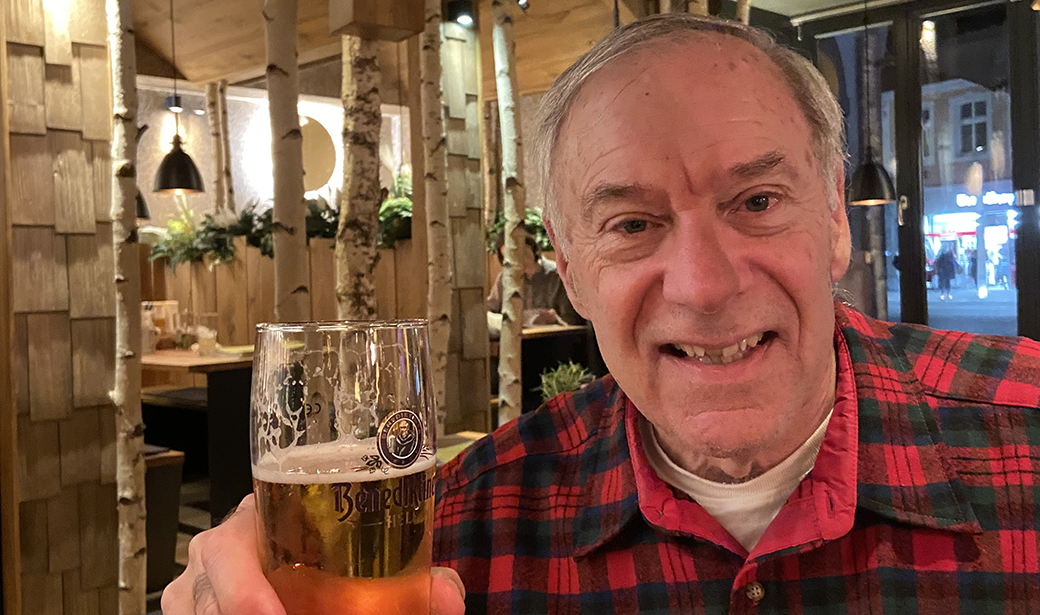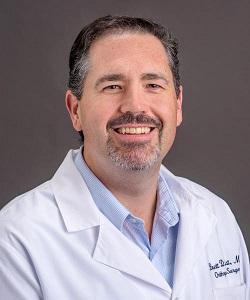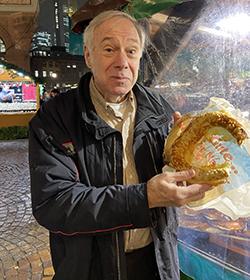John Benda’s boundless energy keeps him active. As a kid growing up in suburban Chicago, the time he spent in swimming pools paid off with a swimming scholarship at the University of Missouri, where he was a team captain for two years as a breaststroke swimmer.
After graduating in 1969, Benda became an accountant and financial executive but never slowed down. He picked up racquetball at Mizzou and years later learned pickleball after he and his wife, Carol, retired to Florida.
But in the summer of 2022, Benda hit a major hurdle that kept him off the courts and hampered his travel plans. Hip pain sidelined the exercise devotee to the point he was resting more than Benda was on his feet. Simple tasks like putting on socks and shoes were excruciating without help.
He had developed osteoarthritis, the most common form of arthritis, which causes swelling, pain and stiffness in joints that don’t have enough cartilage to act as a shock absorber.
“I had virtually no cartilage left in my hip,” Benda said. “I was totally bone on bone. And I in fact had lost about an inch in height in my right leg because of it.”
But during a fraternity reunion event in Columbia, Benda saw a vision of a better, pain-free future. His group went on a tour of the Missouri Orthopaedic Institute and Thompson Laboratory for Regenerative Orthopaedics, and the facility made such an impression on Benda he decided to ask if someone there could help with his hip pain.
That was when he met Brett Crist, MD, a longtime orthopaedic trauma and reconstructive hip surgeon specialist at MU Health Care. Crist explained that Benda’s arthritis had progressed to the point that nonoperative treatment no longer helped with his pain.
“The hip cartilage and the labrum wear down as osteoarthritis progresses,” Crist said. “With osteoarthritis, your body makes up for it by creating more bone to counter the increased pressure, which creates this vicious cycle of wearing down the remaining cartilage and labrum. And how you fix that is to replace the parts that aren’t working.”
Eager to relieve the searing, bone-deep pain that dogged him, Benda decided to move forward with a hip replacement. He chose to receive a direct anterior hip replacement, which uses a small 3.5- to 4-inch incision on the front of the hip and works between muscles as compared to other forms of hip replacement, which cut through muscles and tendons. This approach can help patients recover more quickly after surgery.
Benda had his surgery on September 25, 2022. Crist and his operating team made their incision and first removed the femoral head, a ball-shaped piece of bone about the diameter of a baseball. Then Crist removed the bone spurs and remaining cartilage from the hip socket, fixed a titanium shell to the hip socket with a screw and lined the shell with a special plastic to allow the joint to move naturally. Crist also replaced the femoral head with a ceramic ball to recreate the hip joint’s natural anatomy.
Research that goes into developing new surgical techniques and monitoring their effectiveness, such as the direct anterior hip replacement, is made possible because physician-researchers like Crist have access to research facilities like the Thompson Center for Regenerative Orthopaedics.
Crist tells patients like Benda they have an 80% chance of not needing further surgery after 20 years with the new joint.
“He was introduced to us through the Thompson Center and came here because he was impressed with our orthopaedic hospital,” Crist said. “Our work here emphasizes the benefit of specialization in patient care because our doctors, therapists and nurses there are used to taking care of orthopaedic patients. Every hospital wants their patients to have success, but I think the culture here is a big part of how things go.”
After an overnight hospital stay, John and Carol left with detailed instructions on how to care for his new joint. They drove to central Illinois to spend the holidays with family, stopping so Benda could stretch his hip.
He did physical therapy at home, and Crist followed up with Benda via telehealth appointments to make sure his rehab was going smoothly and that his pain was improving. Three months later, Benda felt like a younger version of himself walking around on vacation.
“Although there was some discomfort for a few days, I was doing stairs almost immediately and walking miles shortly thereafter,” Benda said. “I did not use a walker more than a week. And we went to Europe in December, visited Christmas markets in Germany and was on my feet six, seven miles a day. No pain in the cold or anything like that.”
He hasn't missed a step since and is making the most of life as a retiree: playing bridge, bocce and hitting the pickleball courts five days a week.
“We live around other retirees who have also had hip replacements and unfortunately did not have the results I did,” Benda said. “Frankly, it was a better outcome than I expected.”





